Sewing is a wonderful hobby that allows us to unleash our creativity and create beautiful garments, home decor, and more.
Table of Contents
ToggleIt is very annoying if the sewing has stopped again and again due to machine jamming. It can bring your project to a screeching halt and leave you feeling overwhelmed and stressed.
Don’t let sewing machine jams put a damper on your creativity. Arm yourself with the knowledge to troubleshoot and fix those pesky jams, and get ready to enjoy uninterrupted sewing sessions.
Let’s try to find out the reason for sewing machine jamming and some effective solutions to get back to sewing in no time.
Embroidery Digitizing Services
If you are looking for embroidery digitizing services, EMDigitizer is one of the best embroidery digitizing companies. Providing all types of embroidery digitizing. I recommend you try digitizing services.
Order NowGet Free QuoteReasons Of Sewing Machine Jamming
We’ve identified the common causes of sewing machine jamming and explored a few powerful solutions to get your system strolling easily once more.
1- Poor Threading
Machines follow a selected threading path, and if the thread isn’t properly threaded via various components, it can bring about jamming.
The threading system generally entails passing the thread by the thread courses, tension disks, take-up lever, and needle.
If you skip any of these steps, it can disrupt the smooth flow of the thread, leading to tangles, knots, or thread breakage, which will cause the machine to jam.
You will learn to thread an embroidery needle in this blog.
Tension Issues:
You all are aware that sewing machines have tension mechanisms that control the tightness of the thread as it moves through the machine.
You are likely to face the thread breaks and it can stick at some points due to improperly adjusted tension either it is loose or tighter than needed.
With the loose tension, your thread may not be well pulled into the cloth and you have a look at free stitches or bunching of floss which is likewise a motive for sewing system jamming.
You need to read this article if you want to learn how to change thread tension on a machine as a beginner.
Solution:
Constantly take a look at the threading of your stitching device by following the commands given in the guide, and ensure the thread is moved properly from the tension discs and take-up lever.
Additionally, experiment with adjusting the tension settings until you achieve balanced stitching, eliminating the chances of the sewing machine jamming.
2- Bobbin Issues
The fabric isn’t going properly, the needle may break, and the machine may jam if you have bobbin issues.
Several bobbin-related problems might result in sewing machine jamming:
- The smooth flow of thread may be hampered if the bobbin isn’t fitted in the spool case.
- Tangles or unequal strain may arise from this, which can cause jamming.
- Using the wrong size can cause problems such as the bobbin not fitting snugly, leading to thread tangling and jamming.
- The thread might have issues, tangle, and finally jam if its tension gets too slack or overly tight.
Discover the ideal embroidery bobbin thread usage and how it affects the stitching procedure.
Thread Tangles:
Thread tangles occur when the upper thread and lower thread (bobbin thread) become entangled or when the thread gets caught on something within the sewing machine.
In the following ways, thread tangles can cause sewing machine jamming.
- Sometimes, the thread can get caught on different parts of the sewing machine, such as the bobbin case, needle plate, or even the needle itself.
- This can happen if there are rough edges, burrs, or foreign objects present. When the thread gets snagged, it can create tangles that cause the machine to jam.
- If the tension settings for the upper thread are not properly adjusted, it can cause the thread to become too loose or too tight.
- In either case, the imbalanced tension can result in thread tangles and subsequent jamming.
Solution:
Regularly take a look at the bobbin to make certain it’s properly inserted and wound with enough thread. If the bobbin is running low on thread, replace it with a full one.
Moreover, monitor the thread tension and make adjustments if essential. By preserving a close eye on your bobbin and thread, you can keep away from tangles and save your sewing machine from jamming.
3- Improperly Installed Presser Foot
The presser foot is designed to apply consistent pressure on the fabric to keep it flat and stable during sewing. if it is not put properly, it can cause sewing machine jamming in the following ways:
1- It may obstruct the fabric’s flow, producing a jam and causing it to become stuck and exert uneven pressure on the fabric. This uneven pressure can cause the fabric to shift or bunch up, leading to jams.
2- If the presser foot is installed inappropriately, it can interfere with the movement of the fabric through the machine. This can result in the fabric caught in the feed dogs or the needle.
3- If you attach the wrong presser foot or use one which is incorrect for the system or the working stuff, it could disrupt the stitching procedure.
Solution:
To cope with the issue of an improperly mounted presser foot, consult with the guide for proper setup commands and ensure the foot is aligned and adjusted to the suitable height.
Also, make sure it is secure in place before resuming your sewing because going with the right presser foot will enable smooth working and can lower the risk of machine jamming.
4- Damaged Needles
If you observe your needle is struggling to move from the material fabric, it indicates that your needle is dull or damaged which causes the thread to get stuck and lead to the sewing machine jamming.
If you are experiencing the subsequent problems, you have to update your needle at once:
- Variations in needle positioning can disrupt the sewing and potentially lead to sewing machine jamming.
- It may not form proper loops for the bobbin thread, especially in machines with a rotary hook mechanism. This can result in tangled or poorly formed stitches.
- As the dull needle struggles to penetrate the fabric, it can cause distortion or displacement of the fabric layers that lead to uneven stitching, puckering, or gathering of the fabric, creating a jamming situation.
Want to get the best tips to stop puckering when stitching to obtain perfect results, click here.
Solution:
If you suspect that a dull or damaged needle is causing your machine to stop working, replace it with a new one but make sure to choose the correct needle type and size as per fabric.
A sharp and properly sized needle will glide through the fabric smoothly, preventing jams and ensuring beautiful stitches.
You’ll learn all you need to know in this article on selecting the ideal embroidery needle for your project.
5- Accumulation Of Lint And Debris
Deposition of dirt and rubbish is another cause of sewing machine jamming. Lint from the cloth and threads can build up within the machine over time, blocking its functioning and leading to an error.
The thread cannot move freely due to the debris and it is easily snagged and vulnerable to breaking. If it exists under the needle surface, it may hinder the bobbin’s ability to move the cloth and contribute to the draining of the feed dogs.
Solution:
To clear any dust and debris from the machine’s sections, use a tiny brush or a portable vacuum. Embracing this upkeep schedule keeps the machine in its best state and helps prevent jams.
Preventive Measures To Avoid Sewing Machine Jamming
You can also consider taking these preventive measures to get rid of machine jams:
Change Your Needle Regularly:
You are advised to replace your needle after every 8-10 hours of sewing or whenever you notice signs of dullness or damage. For smooth stitching, the use of a sharp end needle is a great choice to prevent the sewing machine from jamming.
Thread Your Machine Correctly:
It is crucial to make the effort to cautiously thread your system by following the instructions. And make sure the thread is nicely guided across the important parts of the machine.
Clean It Regularly:
Do remember to clean your machine after each project or at least once a month. Eliminate lint and debris from all of the regions through which the needle and thread are passed across for sewing.
Moreover, you should also grease the moving components of the machine as indicated in the user’s guide to keep it working hassle-free for a long time.
Must read this blog for additional information on the best ways to maintain the embroidery machine so that it can run for a long period.
Consider The Correct Needle And Thread:
Each is an essential resource for any sewing task in order they need to be selected for that reason in terms of length for the fabric you are operating with.
In addition, suit your thread weight on your material weights and make certain superior fine threads for optimum effects.
Read this post to learn about choosing the best machine embroidery thread types and their uses for your sewing needs.
Avoid Excessive Speed:
Sewing too quickly can increase the likelihood of jams. So maintaining a moderate and consistent sewing speed is a good step that allows the machine to stitch smoothly without straining the motor or causing thread snags.
Go and find out how the machine’s speed will affect the stitching as a whole and how to keep things running smoothly.
Maintain Proper Tension:
Go to experiment with different tension settings on fabric scraps without going for actual to achieve balanced stitching. Adjust the tension as needed to prevent thread tangling and minimize the chances of jams.
Avoid Pulling Or Forcing The Fabric:
Avoid pulling or pushing the fabric forcefully, as it can lead to uneven feeding and jamming. And let the machine’s feed dogs do the work of moving the fabric through the machine.
Take Breaks During Long Sewing Sessions:
Continuous sewing for extended periods can cause the machine to overheat, leading to performance issues. Take short breaks to allow your machine to cool down and prevent overheating.
By following these preventive measures, you can significantly reduce the likelihood of experiencing sewing machine jamming and enjoy uninterrupted sewing sessions.
Conclusion
Sewing machine jamming can be incredibly frustrating. You can lower the chance of occurrence by following these steps and taking preventive measures and can enjoy smooth and hassle-free stitching for sure.
If you are unable to troubleshoot a machine after applying all the steps, go for professional advice who will guide and help you to repair your gadget.
Every project needs a different kind of thread according to the type of design and weight of the fabric, so it must be of good quality support the fabric, and be thick enough to pass through the needle easily.
It is recommended to clean your sewing machine after each project or at least once a month, depending on how frequently you use it. Regular cleaning will help prevent lint and debris buildup, reducing the chances of sewing machine jams.
The chance of sewing machine jamming increases due to not having proper care and maintenance of the machine. Sometimes it is due to technical issues or human errors. Somehow keeping the machine in good condition can be ensured by proper cleaning.
If you have any questions leave the comments or you can visit our social channels for more updates regularly. We provide embroidery digitizing services if you need digitizing services feel free to contact us or email us.

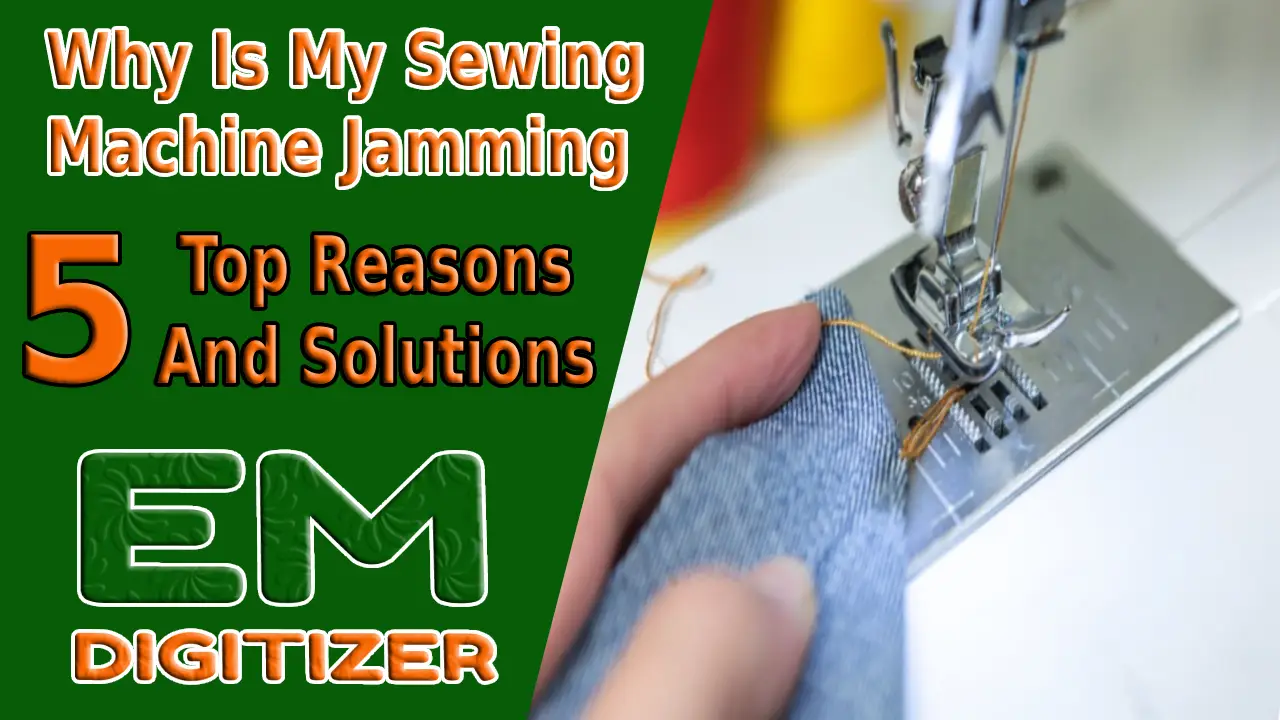
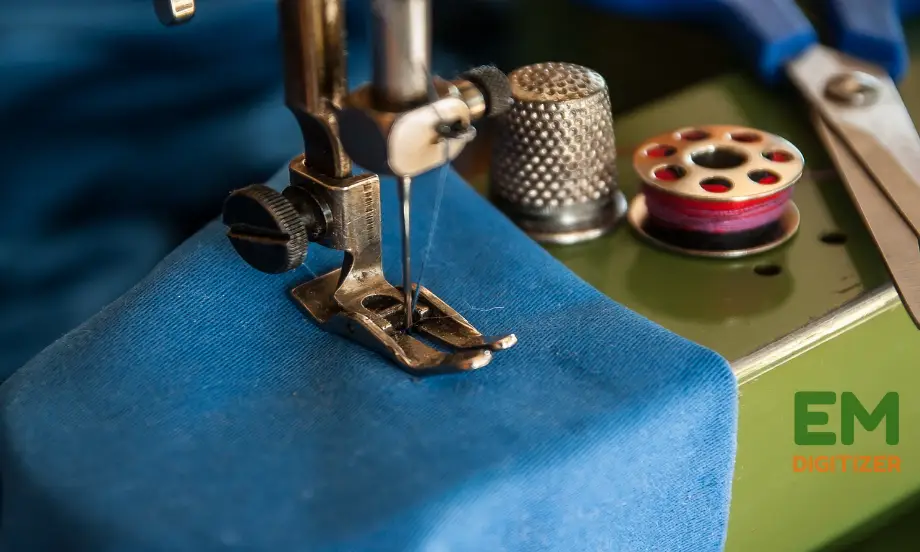
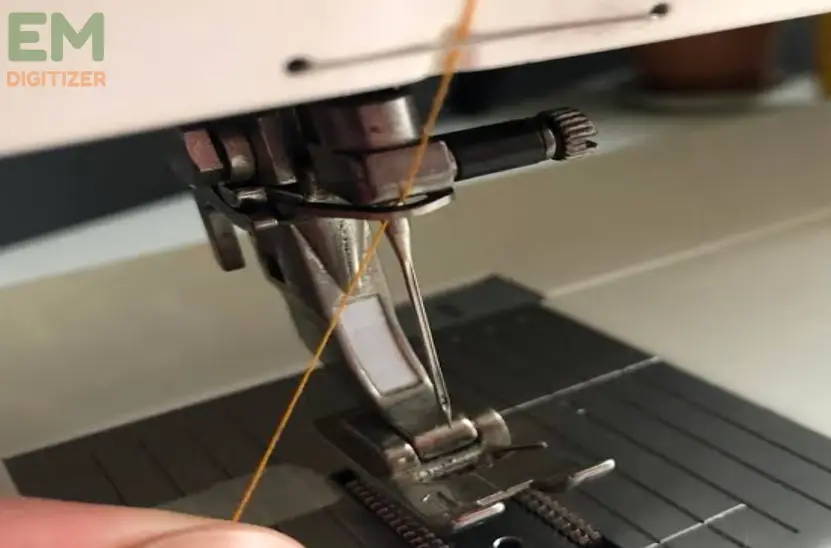

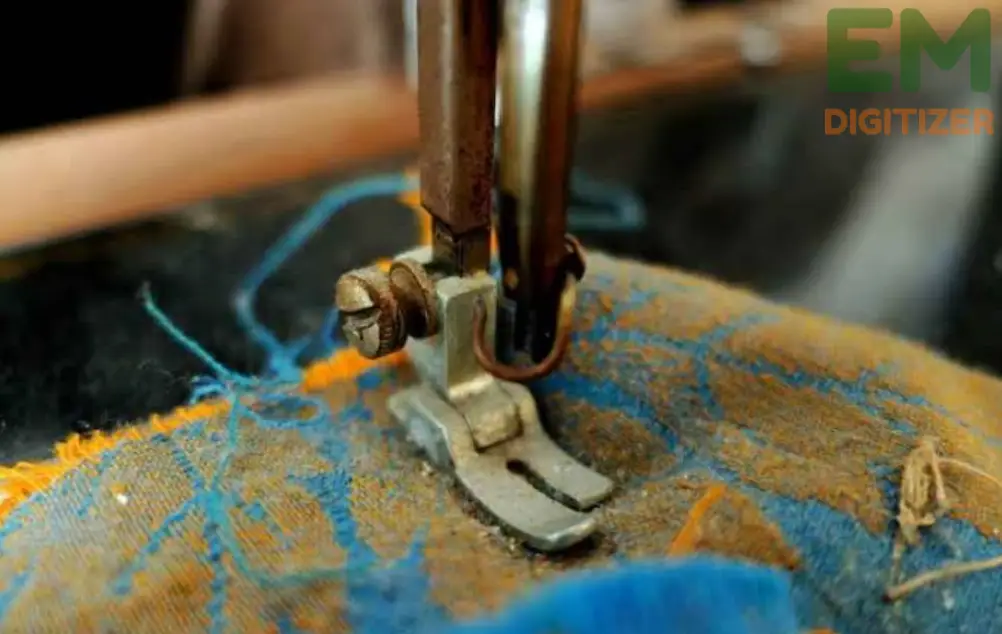
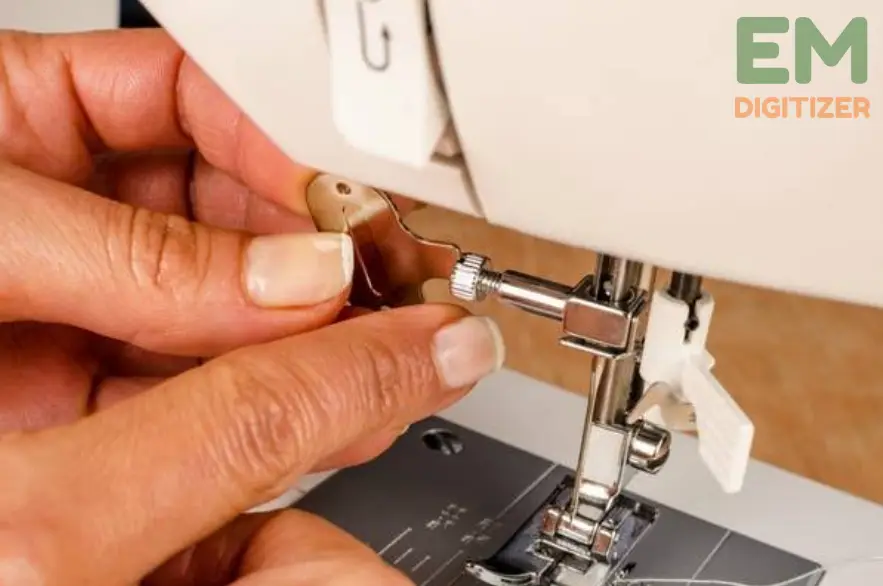
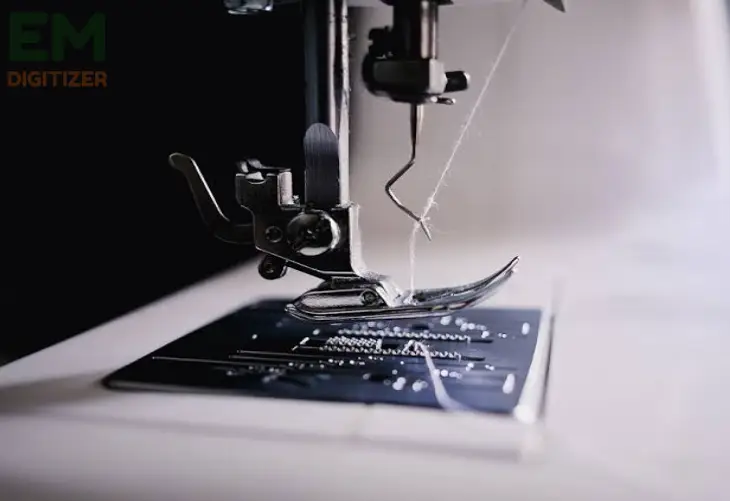

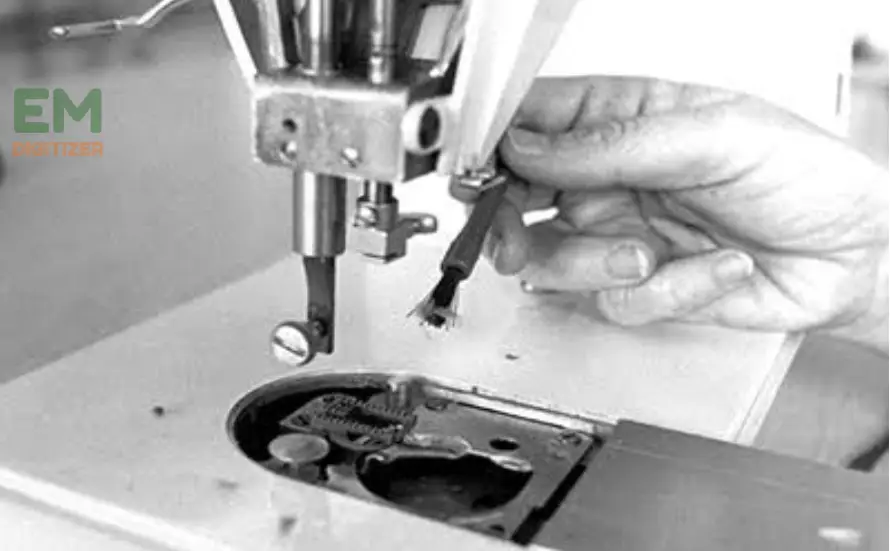


Jamming problems solved! This post explores the top 5 reasons why your sewing machine may be jamming and provides effective solutions to keep your stitching smooth and frustration-free. Stitch with confidence and ease!